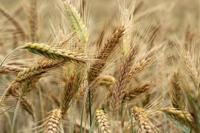How starch becomes sugar

Starch is a widespread organic product in the plant world and is present in barley at around 60%. Starch is a long-chain polymer of glucose molecules joined together to store the glucose made by photosynthesis. To begin the fermentation process and make alcohol however the starch must be broken down into fermentable sugars. Starch contains around 20-30% amylose and 70-80% amylopectin. Amylose consists of hundreds to thousands (approx. 200-5,000) glucose units linked together, is in long chains and forms a spiral structure. Amylopectin, on the other hand, consists of large, highly branched sugar molecules, of which about every 25th sugar has a branching sugar side chain.
In the endosperm of the barley grain, the starch is in the form of large and small grains (starch granules), embedded in a matrix of protein. These granules are surrounded by a protective cover made of cellulose. At the start of germination, the barley’s own enzyme cytase dissolves this cellulose shell. In doing so the sprouted barley grain loses its hardness becoming floury and easily friable. Enzymes are proteins or proteins - biological catalysts that accelerate biochemical processes without changing themselves. They act like biological scissors and are extremely targeted. Common to all enzymes is the ending “-ase”.
Some enzymes are already present in small amounts in the unmalted barley. The majority, however, is formed, activated and multiplied during germination. After the cytase has exposed the starch granules, starch-degrading enzymes (amylases) and protein-degrading enzymes (proteases) can begin their work. The amylases can only reach the starch if the protein matrix has already been broken down by the proteases. The more protein a barley is, the more difficult it is for the amylases to carry out their work. Therefore, the protein content of the barley used should be as low as possible.
During mashing, the soluble compounds already present in the barley or created during malting are dissolved in hot water. Insoluble substances such as proteins and starch are broken down by the respective enzymes and thus converted into a water-soluble form. The breakdown of the proteins into smaller proteins and their individual building blocks, the amino acids, as well as the breakdown of starch into fermentable sugars is advanced and (almost) completed in the mashing process. Malted barley contains sufficient starch degrading enzymes to completely transform its own starches, though this is nor true for other grains such as rye, wheat or corn. For grains with insufficiently high diastic power malted barley is therefore an indispensable component in every grain mash in the UK. In other countries (primarily the U.S. and Canada) commercial enzymes may also be used.
Four enzymes are essential for the breakdown of starch (amylose and amylopectin):
- α-amylases
- attacks the glucose chains at any position in the amylose and at unbranched positions in amylopectin and cuts them into smaller sugar chains
- β-amylases
- Branches exactly two glucose units (= maltose) from the chain end of the amylose and the amylopectin. With amylopectin only up to the first branch
- Limit detrinases
- only attacks the amylopectin specifically at the branch points and also supplies smaller sugar chains. Amylose remains unaffected
- α-glucosidases
- Cuts off individual glucose building blocks from the chain end of the amylose and the amylopectin
The combined ability of these enzymes to break down starches into fermentable sugars determines the diastatic power attributed to a grain.
The smaller sugar chains formed can be broken down further by the enzymes in the same way. However, the enzymes only develop their effect successfully if conditions that are favorable for them (temperature, exposure time) are observed. Their optimum temperature is between 63ºC and 65ºC; the exposure time is 30-60 minutes. This temperature corresponds to that of the lst mash water. Higher temperatures in the 2nd, 3rd and partly also 4th water cause gelatinization or liquefaction of starch that has not yet been degraded. A few enzymes survive the high temperatures and can convert this dissolved starch further into fermentable sugar. At the end of maize, the starch, under the most favorable conditions, is converted into the sugars glucose, maltose and maltotriose (contains three glucose units) which can be used by the yeast with up to 80%. The rest are made up of smaller sugar chains that the yeast cannot convert into alcohol.

